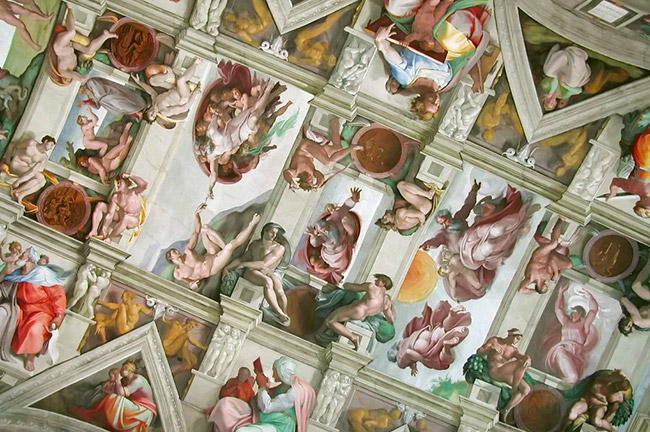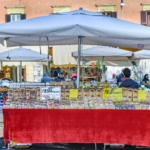
Cappella Sistina
One of the most precious works of art in the Vatican City is not a museum piece. It is actually an entire building—the Sistine Chapel. And you cannot leave this city-state without seeing its grandiose interiors. Learn more about it in this guide.
A Brief History of the Sistine Chapel
Named after Pope Sixtus IV, the Sistine Chapel is one of the most important buildings in the Apostolic Palace, the official residence of the Pope. After all, it was meant to be the pope’s private chapel, with access limited to higher-ranked officials. It was built between 1473 and 1481 to replace the Capella Maggiore—this previous chapel was such in a bad state that it was demolished.
Because of the Sistine Chapel’s importance, the finest artists of the High Renaissance were commissioned to decorate it. These include Sandro Botticelli, who painted some of the frescoes on the walls; and Michelangelo, who painted the ceiling.
Today, it is where the College of Cardinals congregate for the Papal conclaves, where they select the next pope. It also remains the venue for various important events in the Papal Calendar, including Masses and other official ceremonies.
What to See
While the ceiling of the Sistine Chapel is enough reason to visit it, there’s actually more to see inside. In fact, the Chapel’s interiors are covered with art. Here are some of the works that you can see inside:
The Ceiling
Whenever the Sistine Chapel is mentioned, this is the first thing that comes to mind. This epic multi-panel fresco painted by Michelangelo depicts nine scenes from the Book of Genesis in the Bible. Those scenes include the iconic Creation of Adam—the painting wherein God and Man reach out, and nearly touch, each other’s hands.
These nine scenes from Genesis are framed by various motifs. These include depictions of the prophets and the sibyls who have each predicted the birth of Christ, stories from the Old Testament, and the ancestors of Jesus.
The Last Judgement by Michelangelo
Located behind the altar of the Sistine Chapel is The Last Judgement, which was also painted by Michelangelo in 1534. It depicts the Second Coming of Christ, which in Catholic teaching means the end of days when God judges the world. The painting is also regarded as showing the transition from the High Renaissance style of painting to the Mannerist style.
Other than showing the transition between two major styles of painting, The Last Judgement was also quite controversial during its time. After all, Michelangelo painted many of the figures in the fresco as nude. While it is an accurate depiction based on Biblical accounts, the nudity scandalized many Church authorities. Among them was Biagio da Cesena, the Papal Master of Ceremonies, who called the painting one fit “for the public baths and taverns.” Insulted, Michelangelo painted Cesena into The Last Judgement as Minos, judge of the underworld, awaiting the arrival of souls into Hell.
That said, Michelangelo also painted himself into the painting. His face can be seen just below Christ’s figure, on the flayed skin held by Saint Bartholomew.
The Walls
While the works of Michelangelo dominate the Chapel, its walls are also covered with frescoes painted by the leading artists of the Renaissance. For example, the Chapel’s northern wall features The Temptation of Christ by Botticelli, while its southern wall has the Punishment of the Rebels by the same artist. Other notable frescoes on the northern wall include Cosimo Rosselli’s version of The Last Supper and the Delivery of the Keys by Pietro Perugino. Meanwhile, the southern wall also features the Testament and Death of Moses, which is attributed to Luca Signorelli or Bartolomeo della Gatta.
Come and see our Vatican Museums, Sistine Chapel, and Basilica Tour for yourself.
Tips and Advice
- As a general rule, photography is not allowed inside the Sistine Chapel. However, you can take photos in other parts of the Vatican Museum, only without flash.
- Please observe proper decorum inside the Chapel. While it houses one of the most famous works of art in the world, it is still also a place of worship. Refrain from talking and any form of horse play.
- Due to the sheer number of travelers wanting to see the works inside the Sistine Chapel, be prepared to spend some time in line. However, you can minimize the time spent in line—or avoid waiting altogether—by booking a tour.




